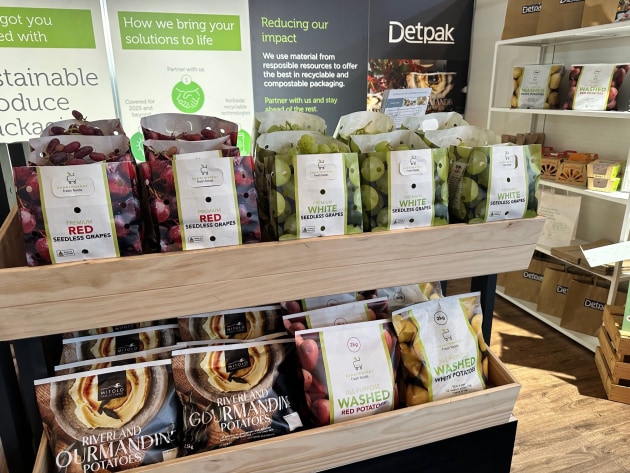Where and when to substitute from plastic to paper packaging is at the fulcrum of the sustainability debate for brands the world over. Currently, this is only plausible in certain segments and can come with consequences, writes John Nelson, editor at Smithers.
Any changeover from plastic to fibre-based packaging is dependent on improvement in paperboard materials, and coating technologies, in particular. Simultaneously, the plastics industry is reconfiguring its own products to make these more sustainable, emphasising recyclable polymers, as a strong solution for a circular economy.
The 25 applications where such a change is most compelling have been identified by the survey for the latest market intelligence study – The Future of Paper vs Plastic Packaging Markets to 2028 – from Smithers, the leading market research consultancy for the paper, print, and packaging industries.
In this exclusive article for PKN Packaging News, Smithers reviews the immediate potential in fresh produce and meats.
Fresh produce
One of the most immediate changes that can be achieved is with netting bags used for citrus fruit, and onions. These are ambient products, that require no specialised packaging. Consequently, a rapid transition is possible. Smithers estimates that up to 70 per cent of such formats could disappear from grocery channels by 2028, instead merchandised loose and transported in single-use or re-use paper bags.
For retailers that still want to have collation unit sales, tray formats are poised to greater use, and also switch over to fibre-based formats. Multiple paper companies have developed new options made wholly from corrugated or cartonboard. These, along with moulded fibre, are a better option for fruits and vegetables that are subject to bruising.
In the contemporary market, around 40 per cent of produce trays are fibre-based, and the remainder plastic. This share is forecast to increase to around 70 per cent in 2028.
To compete with paper-based alternatives, plastic manufacturers are designing produce packs and barrier films from single polymer material sets, advocating these as fully recyclable. Expanded polystyrene (EPS), however, is now recognised as the most problematic plastic, and in particular is being phased out. In several jurisdictions, including Western Australia, this is being backed by legal requirements.
One outstanding issue for fresh produce packaging is that many plants continue to respire even when harvested and packed, potentially leading to elevated oxygen levels and early spoilage. There are an array of film or rigid equilibrium modified atmosphere packaging (eMAP) solutions, that while plastic, can prolong the shelf life of such produce. As there is an increasing appreciation of how food waste itself contributes to greenhouse gas emissions, this will mitigate against the transition to non-specialised fibre formats, for produce like strawberries, grapes, or mushrooms.
Overall, while there is great potential in fresh produce, all products and pack types will need to be reviewed in detail, and the balance between paper, plastic, or no packaging, be made on a product by product basis.
Meat, poultry, and fish
Animal-derived proteins pose a more serious challenge for paper to replace plastics. There are some formats already on the market, but these typically require an internal polymer barrier layer. This prevents the produce from spoiling by blocking the transition of oxygen and water, while also protecting the paper fibres themselves from moisture.
Such liners are in theory detachable at end-of-life, but in practice this is highly time-consuming to do. In consequence barrier liners, which can constitute over 15 per cent of a typically paperboard protein tray, often make the fibres non-recoverable, largely eliminating the gains of moving to a fibre-based pack.
Even as and when detachable liners, or barrier coatings compatible with repulping lines are developed, these formats still require lidding films. Such plastics provide a protective barrier over the top of a pack, as well as enabling customers to inspect the goods. There has been some development of barrier translucent papers in some food applications, but the barrier performance and opacity of these is still well behind established polymer grades. A further difficulty that is only now being addressed is to obtain a strong enough seal between a lidding film and a paperboard base. There has been some adoption of hybrid formats, such as meats on a coated paperboard base sealed with a vacuum pack film, but in general much less progress is anticipated in this application.
Smithers’ forecast is that for protein packs paper’s share of the market will increase only marginally – from 25 per cent in 2023 to 28 per cent in 2028. Various technical considerations and the need to prolong shelf life for some of the highest carbon-impact foods, such as red meats, will significantly hinder the progress of paper-based alternatives. Instead, the industry will benefit from sustainability improvements within plastics, including designs to enhance recyclability and the use of more post-consumer recycled resins.
The market outlook for making the transition from plastic to paper is analysed in depth in the new Smithers report – The Future of Paper vs Plastic Packaging Markets to 2028. With expert analysis of the prospects in 25 separate end-use applications this provides a vital strategic tool for companies across the global packaging value chain.
This article was first published in the September-October 2023 print issue of PKN Packaging News, p12.







